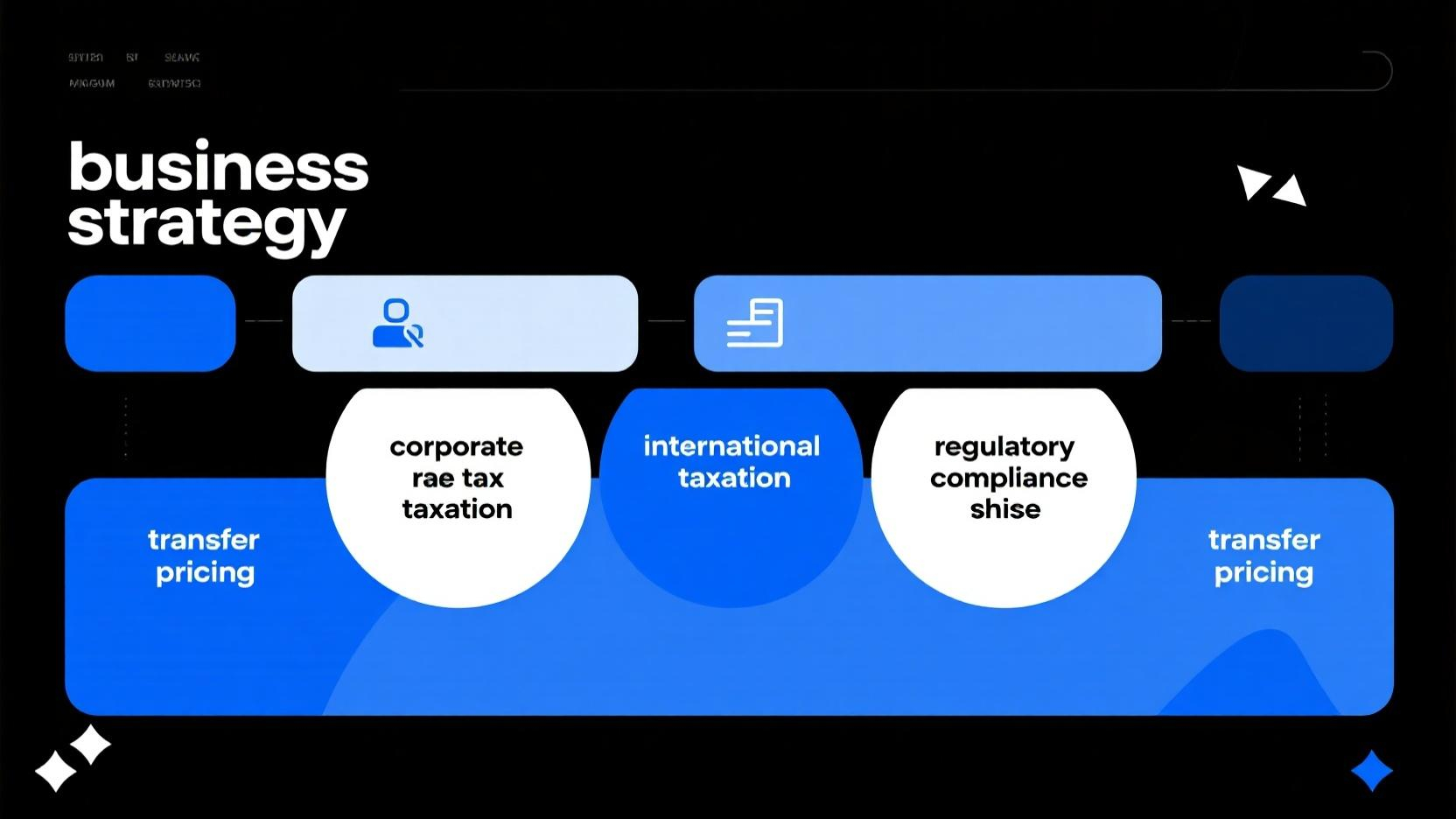Image Source: pexels
Transfer pricing plays a pivotal role in global corporate taxation, influencing how multinational corporations allocate profits across borders. In the context of ‘Analyzing Transfer Pricing Issues: Corporate Tax Strategies in Globalized World’, these companies strategically set transfer prices to optimize tax liabilities, often shifting profits to low-tax jurisdictions. This practice has sparked controversies, with tax authorities scrutinizing its impact on revenue collection, particularly in developing nations.
Nearly all sampled firms from 2008 to 2015 employed transfer pricing to reduce tax burdens, saving an average of $43 million annually. However, this raises concerns about fairness and the erosion of tax bases worldwide.
Key Takeaways
- Transfer pricing lets big companies decide prices for trades between their branches. This affects how profits are taxed in each country.
- Following OECD rules helps companies handle transfer pricing better. It lowers the chance of breaking rules and makes global business clearer.
- Countries need to work together to fix transfer pricing problems. This makes taxes fair and stops profits from moving to low-tax areas.
Understanding Transfer Pricing
Definition and Key Concepts
Transfer pricing refers to the method used to determine the prices of goods, services, or intellectual property exchanged between related entities within a multinational corporation. This practice ensures that transactions between subsidiaries or divisions reflect fair market value. The arm’s length principle, a cornerstone of transfer pricing regulations, mandates that intercompany transactions should mirror those conducted between unrelated parties under similar conditions. This principle, widely accepted by international tax authorities, aims to prevent profit manipulation and ensure equitable taxation.
For example, regulations under section 482 of the U.S. Internal Revenue Code require that intercompany prices yield results consistent with those of unrelated taxpayers engaging in comparable transactions. By adhering to these guidelines, corporations can avoid disputes with tax authorities and maintain compliance with global standards.
Role in International Taxation
Transfer pricing significantly influences international taxation frameworks. Multinational corporations use it to allocate profits across jurisdictions, often optimizing their global tax liabilities. By strategically pricing intercompany transactions, businesses can shift profits to low-tax countries, reducing their overall tax burden. This practice, while beneficial for corporations, raises concerns about fairness and revenue distribution among nations.
Governments rely on transfer pricing rules to ensure they receive their fair share of tax revenue. International efforts, such as the OECD’s Base Erosion and Profit Shifting (BEPS) initiative, aim to address aggressive transfer pricing practices. Research highlights a strong correlation between these practices and the use of tax havens, underscoring the need for robust regulations to maintain economic stability.
Importance for Multinational Corporations
For multinational corporations, transfer pricing is a critical component of tax strategy. It determines how profits are allocated across different jurisdictions, directly impacting tax liabilities. Companies often prioritize transfer pricing to minimize taxes, manage earnings, and enhance financial performance. For instance, businesses with overseas manufacturing operations rely on transfer pricing to allocate costs and profits effectively.
However, the complexity of international tax regulations requires careful management. Non-compliance can result in penalties and reputational damage. By adhering to transfer pricing guidelines, corporations can achieve tax efficiency while maintaining compliance with global standards.
Common Transfer Pricing Issues
Profit-Shifting and Base Erosion
Profit-shifting and base erosion represent some of the most pressing challenges in global taxation. Multinational corporations often shift profits from high-tax countries to low-tax jurisdictions, exploiting differences in tax rates. This practice erodes the corporate income tax base in high-tax nations, leading to significant revenue losses. Governments face reduced funding for public services and infrastructure, which directly impacts economic growth.
Common methods of profit-shifting include registering intellectual property in low-tax jurisdictions and making royalty payments to subsidiaries. Financing operations through low-tax countries also allows companies to claim deductible interest payments in high-tax regions. These strategies, while legal, create an uneven playing field for smaller businesses that lack the resources to engage in such practices.
Intellectual Property and Tax Havens
Intellectual property (IP) plays a pivotal role in facilitating tax avoidance. Companies often conduct research and development in high-tax countries but transfer ownership of the resulting IP to subsidiaries in tax havens. This strategy allows them to benefit from lower tax rates on income generated by intangible assets. Economists estimate that this practice costs the U.S. Treasury approximately $90 billion annually.
The ambiguity surrounding the valuation and location of IP further complicates the issue. Multinational corporations exploit these loopholes to reduce their tax liabilities significantly. Reforming IP laws could help address these challenges by making it harder for companies to undervalue their IP during transfers.
Treaty Shopping and Double Taxation Risks
Treaty shopping occurs when companies exploit international tax treaties to minimize their tax obligations. Multinational corporations often route transactions through intermediary countries to benefit from favorable treaty provisions. This practice undermines the intent of tax treaties and increases the risk of double taxation for other entities.
To combat treaty shopping, measures such as Action 6, Action 7, and Action 15 under the OECD’s BEPS framework have been introduced. These measures limit treaty benefits to eligible entities, redefine "permanent establishment," and provide a multilateral instrument to streamline treaty modifications. These steps aim to ensure fair taxation and reduce opportunities for abuse.
Corporate Tax Strategies in a Globalized World
Compliance with OECD Guidelines
Adhering to the OECD guidelines is essential for multinational corporations to manage transfer pricing effectively. These guidelines provide a structured framework to ensure compliance and mitigate risks. Key components include:
- Benchmarking Data: Corporations must maintain data to justify their pricing methodology.
- Adjustment Mechanisms: Companies should establish protocols to adjust transfer prices if they deviate from the arm’s length range.
- Advance Pricing Agreements (APAs): These agreements help preempt disputes with tax authorities.
- Documentation Requirements: Detailed records are necessary to meet local regulations.
- Dispute Resolution Mechanisms: Provisions for resolving disagreements ensure smoother operations.
- Compliance Monitoring: Regular reviews help align transfer pricing with economic realities.
- Annual Reporting: Corporations must submit comprehensive reports to tax authorities.
These measures not only reduce compliance risks but also enhance transparency in global operations. However, navigating complex regulations and extensive documentation requirements remains a challenge for many businesses.
Use of Advance Pricing Agreements (APAs)
Advance Pricing Agreements (APAs) offer a proactive solution to transfer pricing uncertainties. They establish pre-approved pricing methods between corporations and tax authorities, providing several benefits:
| Benefit | Description |
|---|---|
| Certainty over transfer pricing | APAs provide assurance regarding compliance with transfer pricing practices over several years. |
| Reduced compliance costs | They lower the administrative burden and costs associated with traditional compliance. |
| Minimized exposure to audits | APAs help in reducing the risk of audits and potential reputational damage. |
By reducing compliance costs and audit risks, APAs enable corporations to focus on strategic growth. Additionally, they foster trust between businesses and tax authorities, ensuring smoother operations across jurisdictions.
Leveraging Global Tax Agreements
Global tax agreements play a crucial role in optimizing corporate tax strategies. These agreements allow businesses to:
- Optimize tax liabilities by strategically setting transfer prices.
- Manage cash flow effectively within multinational operations.
- Ensure compliance with varying regulations across jurisdictions.
However, leveraging these agreements comes with challenges. Corporations must navigate complex regulations, meet extensive documentation requirements, and adapt to fluctuating market conditions. Despite these hurdles, global tax agreements remain a vital tool for balancing compliance and profitability in a globalized economy.
Impact of Transfer Pricing on Economies

Image Source: unsplash
Revenue Loss in Developing Countries
Transfer pricing practices have significantly impacted the economic stability of developing nations. Multinational corporations (MNCs) often shift profits to low-tax jurisdictions, depriving these countries of much-needed tax revenue. This loss hinders their ability to fund essential public services and infrastructure development.
- Ghana has experienced substantial revenue losses due to MNCs exploiting transfer pricing loopholes, slowing its economic progress.
- Nigeria, despite its abundant natural resources, struggles with revenue generation and rising debt, partly due to aggressive transfer pricing practices.
Research highlights that these practices undermine resource mobilization, which is critical for fostering economic growth and improving social welfare. Policymakers in developing nations must address these challenges by strengthening tax regulations and enhancing enforcement mechanisms.
Tax Competition Among Developed Nations
Tax competition among developed nations has intensified the complexities of transfer pricing. Countries with varying corporate tax rates incentivize multinational enterprises (MNEs) to manipulate transfer prices, shifting profits to low-tax jurisdictions.
| Evidence | Description |
|---|---|
| Intrafirm Transactions | Over 46% of U.S. imports in 2000 were intrafirm transactions, showcasing MNE activity. |
| Tax Rate Discrepancies | Wide variations in corporate tax rates encourage profit-shifting strategies. |
| Profit Shifting | MNE subsidiaries in high-tax countries pay 32% less tax than local firms. |
International efforts, such as the OECD/G20 BEPS initiative, aim to curb these practices while maintaining economic stability. However, the strong link between multinationalism, tax havens, and aggressive transfer pricing underscores the need for stricter global regulations.
Balancing Fair Taxation and Economic Growth
Balancing fair taxation with economic growth requires strategic approaches to transfer pricing. Companies can optimize global tax liabilities while ensuring compliance with international standards.
- Strategic pricing influences the distribution of taxable income across jurisdictions.
- Robust transfer pricing policies reflect local rules and the arm’s length principle.
- Dynamic policies adapt to legislative changes and evolving business needs.
| Strategy | Description |
|---|---|
| Evidence of Compliance | Demonstrates adherence to global rules, crucial during disputes. |
| Dynamic Policy | Ensures adaptability to changing regulations and market conditions. |
| Robust Transfer Pricing Policy | Promotes compliance and aligns with the arm’s length principle. |
By adopting these strategies, corporations can enhance financial performance and competitiveness while contributing to equitable taxation. Governments must collaborate with businesses to create policies that support both economic growth and fair tax practices.
Recommendations for Policymakers and Corporations
Strengthening International Cooperation
Policymakers must prioritize international collaboration to address transfer pricing challenges effectively. Complex global networks often lead to conflicts and double taxation due to differing regulations. By fostering cooperation, governments can harmonize tax rules and reduce these disputes. Initiatives like the OECD’s BEPS framework demonstrate the value of collective action in curbing profit-shifting practices.
Joint efforts can also ensure that nations receive their fair share of tax revenue. For example, stricter enforcement of global agreements can prevent multinational corporations from exploiting tax havens. Policymakers should establish platforms for dialogue, enabling countries to share best practices and resolve conflicts efficiently. This approach not only strengthens global tax systems but also promotes economic stability.
Enhancing Transparency and Reporting Standards
Transparency is critical for mitigating transfer pricing risks. Multinational corporations must maintain comprehensive documentation to validate their practices. This includes a master file outlining global operations, a local file detailing jurisdiction-specific transactions, and country-by-country reporting (CbCR) to provide financial metrics for each region. These measures enhance accountability and reduce the likelihood of disputes with tax authorities.
However, challenges persist. Regulatory complexity, compliance with documentation requirements, and the selection of appropriate comparables complicate the process. Reliable data is essential for benchmarking intercompany transactions, as inaccuracies can lead to incorrect pricing determinations. Policymakers should simplify regulations and provide clear guidelines to ease compliance burdens while ensuring robust oversight.
Promoting Equitable Tax Policies
Equitable tax policies are vital for addressing transfer pricing concerns. Stricter regulations can prevent profit shifting to low-tax jurisdictions, ensuring fair contributions from multinational corporations. Research highlights a strong link between aggressive transfer pricing and the use of tax havens, emphasizing the need for reform.
In South Africa, for instance, transfer price manipulation results in a tax loss of 0.5% of corporate tax payments related to imported commodities. Policymakers must implement tighter controls to curb such practices. International cooperation is equally important to create a level playing field, enabling all nations to benefit from fair tax contributions.
By adopting these strategies, governments and corporations can foster a more transparent and equitable global tax environment.
Transfer pricing remains a complex challenge in global taxation, with issues like profit-shifting and tax base erosion threatening economic stability. Strategies such as compliance with OECD guidelines and proactive frameworks have proven effective in addressing these concerns. Collaborative efforts, like the OECD’s BEPS project and the Platform for Collaboration on Tax, highlight the power of global partnerships in combating tax avoidance.
Balanced taxation fosters economic growth and ensures fairness across nations. Governments, corporations, and international organizations must unite to create transparent policies and equitable systems. By working together, they can build a sustainable tax environment that benefits all stakeholders.
FAQ
What is the arm’s length principle, and why is it important?
The arm’s length principle ensures intercompany transactions reflect market value. It prevents profit manipulation and promotes fair taxation across jurisdictions.
How do Advance Pricing Agreements (APAs) benefit corporations?
APAs reduce compliance risks, minimize audit exposure, and provide certainty over transfer pricing practices. They foster trust between businesses and tax authorities.
Why do developing countries face challenges with transfer pricing?
Developing countries lose revenue due to profit-shifting practices. Weak enforcement mechanisms and limited resources hinder their ability to combat aggressive tax strategies effectively.











